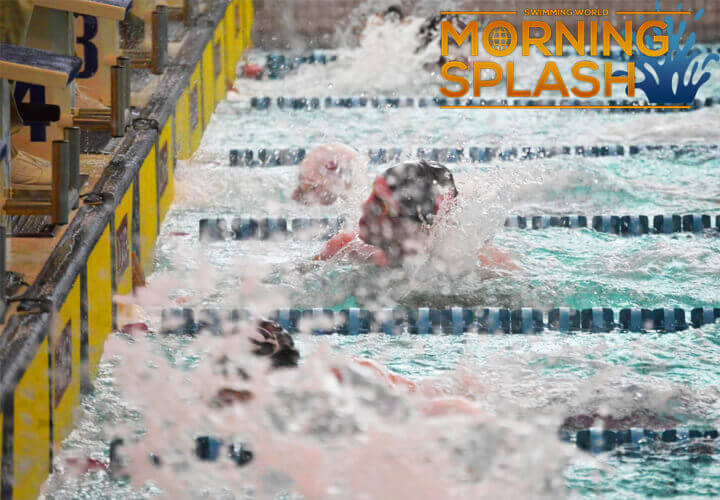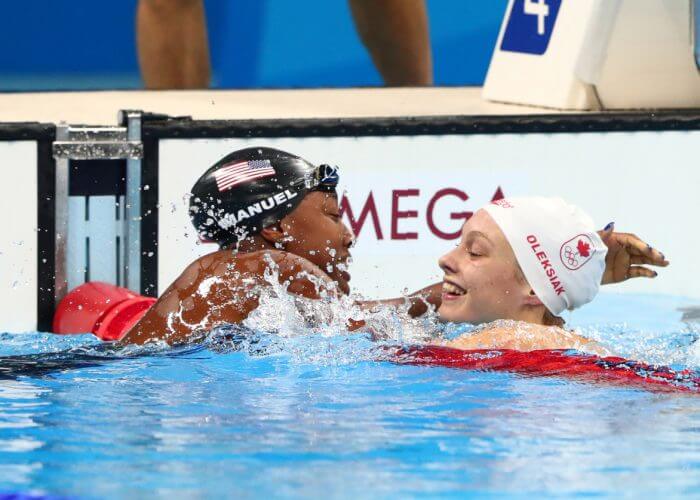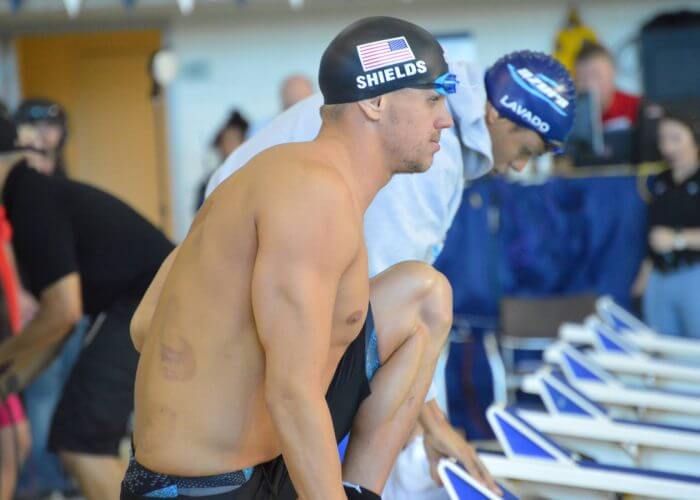Arena Pro Swim Series: To Race or Not to Race?

Morning Splash by David Rieder.
Bob Bowman, the longtime coach of Michael Phelps and the head coach of the 2016 U.S. men’s Olympic swim team, has a saying: “Those who know don’t predict, and those who predict don’t know.” At least when it comes to the various Arena Pro Swim Series meets, he’s right on point.
Over the years, we at Swimming World have typically ignored that advice and made plenty of predictions. Some of those have been correct, such as when we picked the Stanford women and Texas men to sweep the NCAA championships this year.
Others, not so much—like picking Cate Campbell to win Olympic gold in the 50 free in Rio, with defending World Champion Bronte Campbell and 2012 gold medalist Ranomi Kromowidjojo winning silver and bronze, respectively. As it turned out, that trio finished fifth, seventh and sixth, respectively.
But at least all three were in the race, and Cate Campbell and Kromowidjojo both finished within a tenth of bronze medalist Aliaksandra Herasimenia. When it comes to in-season meets—for instance, this past weekend’s Arena Pro Swim Series meet in Atlanta—even the psych sheet guarantees nothing.
Want to make predictions for a meet like that? Good luck.
Given the task of previewing the competition, it made sense to highlight the women’s 100 free, where co-Olympic gold medalists Penny Oleksiak and Simone Manuel were slated to square off for the first time since Rio.

Photo Courtesy: Erich Schlegel-USA TODAY Sports
Elsewhere, the breaststroke events figured to be standout races with Katie Meili squaring off with Molly Hannis and Kevin Cordes with Cody Miller. Conor Dwyer would get a chance to swim the 200 free for the first time since Rio after he was disqualified from his last meet in Mesa for no-showing an evening swim.
A preview story covering all that was posted Wednesday afternoon. Come Friday morning, Oleksiak, Hannis, Cordes, Dwyer and Nathan Adrian had all either scratched or simply not shown up behind the blocks. The Atlanta meet actually marked the second time this year that Oleksiak has entered a Pro Swim Series meet and pulled out. (She did the same in Indianapolis in early March.)
But what do those swimmers have to lose by not showing up? Not much, aside from the nonrefundable meet entry fees and, for professionals, a shot at prize money. There’s no selection at stake, no titles on the line.
And even for those who do show up, it’s impossible to predict who will be at what phase of their training and thus who will be more race-ready at one exact point in the season. And that’s fine—after all, these meets are simply tune-up opportunities for what’s to come.
Bottom line: in the long run, how elite swimmers stack up at these in-season meets—really, any long course meet that’s not a selection meet or a World Championship-level meet—does not matter.
That’s not to say these mid-season Pro Series meets are worthless—far from it. Swimmers have chances in Atlanta and elsewhere to refine technical details and race strategies and get top-notch racing experience before this summer’s all-important National championships.
“I think I respond well to racing because I always forget year-to-year what I’m supposed to do,” Tom Shields said after winning the men’s 100 fly in a season-best time of 52.09.

Photo Courtesy: Caroline Kosciusko
“The most important thing is getting those technical aspects down, and the speed will come later,” Manuel said. “I think my speed always comes at the end, and focusing on those technical details will help me go faster. I’m also focusing a lot on my second 50 and keeping my second 50 and first 50 splits closer.”
Of course, even if the times were not of utmost importance, Manuel has to be pleased with her start to the long course season. She again swam under 54 in the 100 free (twice), posted a blistering 24.66 in the 50 free and almost swam her best time in the 200 free.
Ali DeLoof twice broke 1:00 in the women’s 100 back, while Lilly King looked strong in her first long course racing opportunities since the Olympics. On the men’s side, Chase Kalisz provided arguably the most impressive swim of the meet when he broke 4:10 in the 400 IM.
All impressive results and all positive indicators of good things to come over the next few months. But elsewhere, Olympic gold medalist Ryan Murphy was touched out in the men’s 100 back, finishing three hundredths behind Japan’s Ryosuke Irie. By no means does that mean Murphy should be panicking about his prospects for the summer ahead.
Regardless of what happened this weekend in Atlanta or how anyone swims at any other meet before June 27, the success of any elite-level swimmer’s season will be judged on how they perform Indianapolis at U.S. Nationals, a.k.a. World Championship Trials.
The meet might not have quite the prestige, the gravity or the fan attendance of last year’s Olympic Trials, but qualifying for the World Championships in Budapest is the ultimate goal in the non-Olympic years. Unlike the Atlanta meet, no one will be dropping out last-minute.
Sure, the Arena Pro Series meets do provide some incentives for professionals in the form of prize money, but the financial stakes are even higher at Nationals, where prize money is doubled and each U.S. swimmer who makes Worlds earns a $7500 bonus.
As far as in-the-pool competition, this summer in Budapest will mark swimmers’ last chance to prove themselves among the best competition in the world for two years. For all but a few (i.e., Cate Campbell), it’s the circled meet on the calendar, just like the Olympics were last year.
Had a bad race at a Pro Swim Series meet or skipped the meet altogether? Go get ’em next time. But if anything goes wrong at Nationals, see you in 2019, when the World Championships move to Gwangju, South Korea.
One year from now, few will remember who won what race at the Arena Pro Swim Series meet in Atlanta. But as for who made the World Championships team and went on to shine in Budapest, that’s a whole different story.
All commentaries are the opinion of the author and do not necessarily reflect the views of Swimming World Magazine nor its staff.




